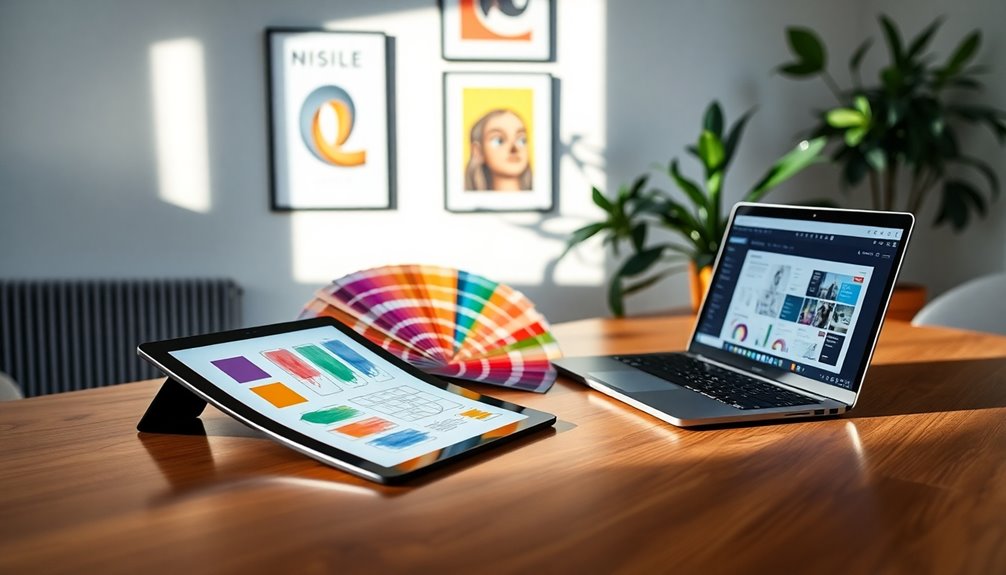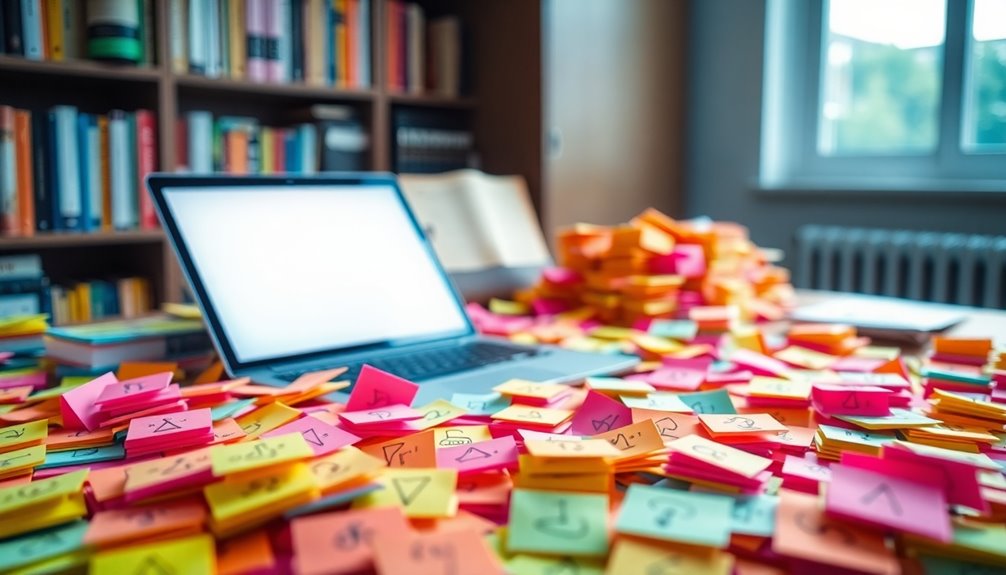If you're preparing for a graphic design interview, knowing the right questions can really help! You might be asked about your favorite design project or how you handle client feedback. They'll want to know about your skills with tools like Photoshop and Illustrator, too. Questions about your creative process and how you fit into the team are common. Plus, being ready shows you care about the role. It's important to showcase your passion and skills with enthusiasm! Stick around, and you'll discover even more tips to help you shine in your next interview!
Key Takeaways
- Expect questions about your design process to showcase your problem-solving skills and creativity in graphic design projects.
- Be prepared to discuss your proficiency with design software like Photoshop, Illustrator, and Figma during technical assessments.
- Highlight your understanding of typography, color theory, and layout principles to demonstrate your design knowledge and expertise.
- Anticipate inquiries about how you handle client feedback and collaborate to meet their needs effectively.
- Share your career aspirations and how they align with the company's goals to illustrate your enthusiasm for the role.
Overview of Graphic Design

Graphic design is a dynamic field that blends visual communication with problem-solving, giving you the tools to convey messages effectively.
Imagine using colors, shapes, and words to create something that grabs attention! You'll work with different mediums, like posters, websites, and even signs.
Key elements like typography, imagery, and layout help you make your designs look amazing. Your creativity will shine as you choose the right colors and images to tell a story.
Plus, understanding how design influences people's feelings can make your work even more powerful.
To succeed, you'll need to pay attention to details and develop your technical skills.
Embrace the fun of designing, and watch your ideas come to life!
Importance of Interview Preparation
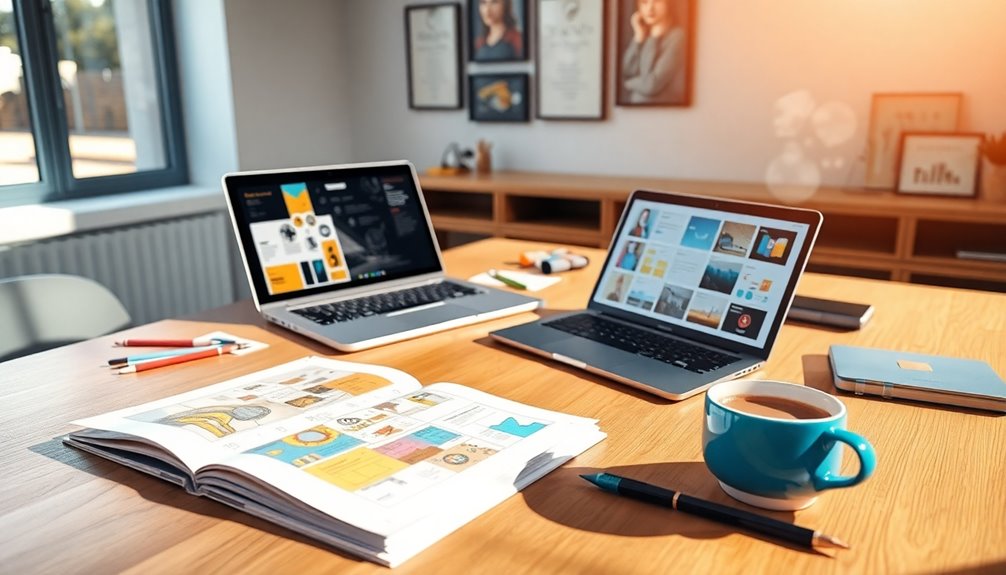
Often, preparation is key to a successful interview in graphic design. When you prepare well, you'll feel more confident and ready to impress.
Here are three important reasons to get ready:
- Confidence Boost: When you practice, you'll feel more self-assured, making it easier to share your ideas.
- Better Answers: Knowing common questions helps you respond clearly and thoughtfully, showcasing your skills.
- Show Interest: Researching the company shows you're excited about the role, which can set you apart from other candidates.
Taking time to prepare can make a big difference!
You'll walk into that interview feeling like a superstar, ready to shine.
Common Interview Questions

Being prepared for interviews means you can tackle common questions with ease. You might hear questions like, "Why do you think you should get this job?" or "What makes you stand out among other candidates?"
These questions are important because they help the interviewer see your personality and unique skills. You may also be asked, "How did you discover our company?" or "What do you know about us?"
It's a chance to show your excitement and knowledge! Remember, they want to know about your career dreams too, so don't hesitate to share!
Practicing your answers will help you feel confident and ready to shine. With a smile and a little prep, you can make a great impression!
Experience-Based Questions
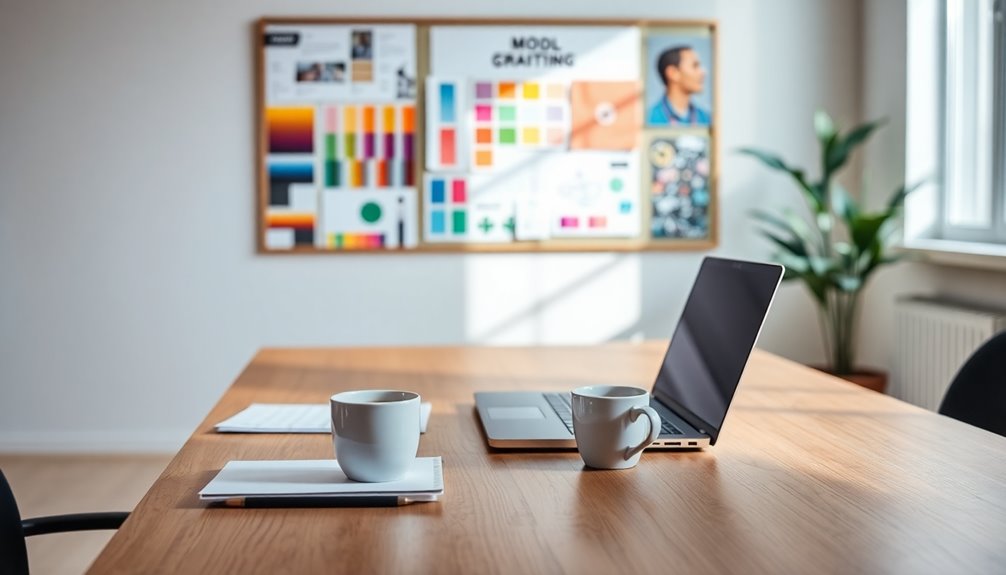
When it comes to experience-based questions in interviews, you'll want to highlight your educational background and previous work experiences effectively.
These questions help employers understand what you've learned and how you can contribute to their team. Here are three things to remember:
- Share your education: Mention any courses or degrees related to graphic design.
- Discuss past jobs: Talk about your roles, what you designed, and the skills you gained.
- Explain changes: If you've changed jobs, share why and what you learned from each experience.
Being clear and confident about your journey shows you're ready for the next step.
Technical Skills Assessment
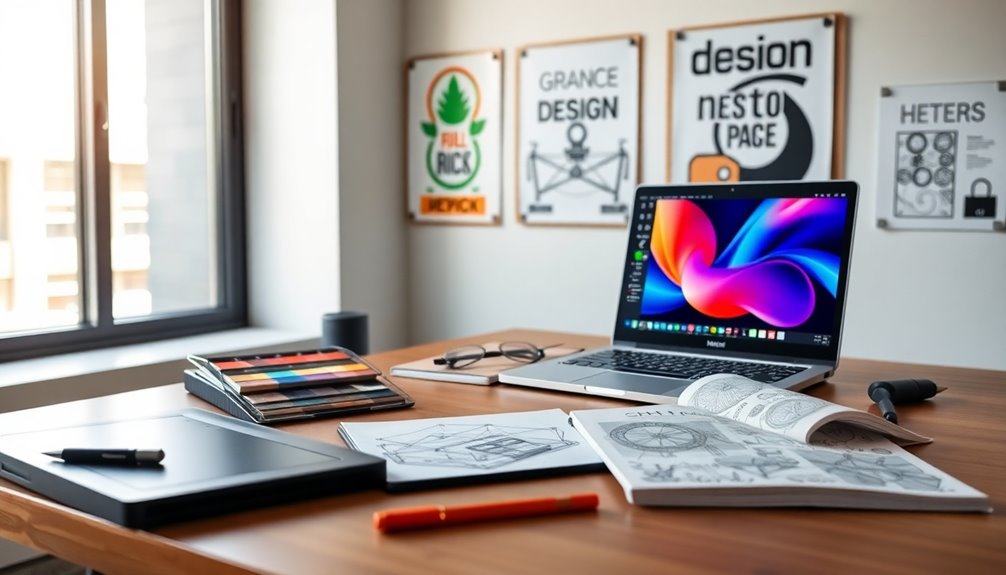
Evaluating your technical skills is essential in a graphic design interview, as these abilities directly impact your effectiveness in the role.
You'll want to showcase your knowledge of popular software like Photoshop and Illustrator. These tools help you create amazing designs!
It's great to know about Figma, too, since it encourages teamwork. Understanding design principles is important, just like knowing how to work with both print and digital formats.
Make sure you're comfortable with layout design in InDesign and can handle photo editing with ease.
Communication Skills in Design
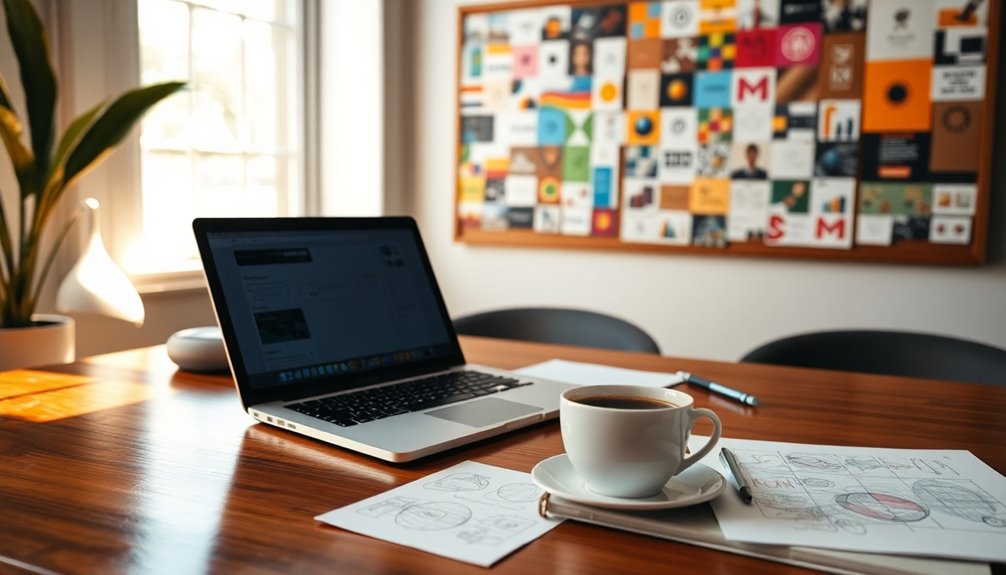
Technical skills lay the groundwork for successful graphic design, but without strong communication skills, those talents can go underutilized.
You need to express your ideas clearly and listen to others, too! Here are three essential communication skills every designer should have:
- Active Listening: It helps you understand what clients really want and need.
- Clear Language: Using specific words can prevent misunderstandings and mix-ups.
- Visual Presentations: Showing your ideas through sketches or slides makes them easier to understand.
Creative Process Exploration
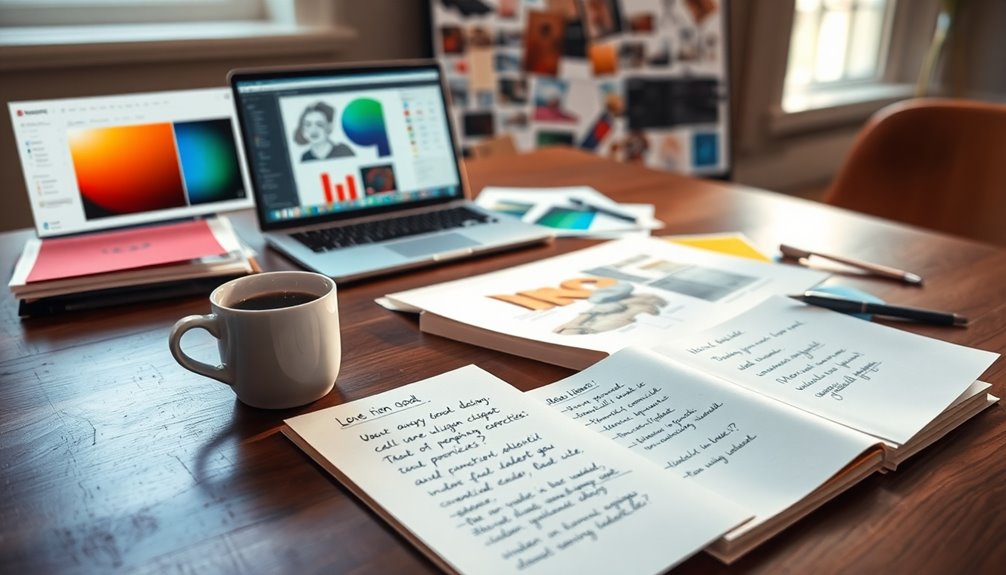
The creative process in graphic design is a dynamic journey that transforms ideas into tangible visuals.
First, you might start by brainstorming, jotting down your thoughts, or making mood boards filled with colors and images that inspire you.
Next, sketching out your ideas helps bring them to life on paper. After that, you can create prototypes to test your concepts, exploring different styles and layouts.
Don't forget, this process is all about trying new things and having fun!
As you go along, you'll refine your designs, making them better and better.
Remember, each step is important, and every idea counts. Additionally, incorporating structured data can enhance the way your designs are perceived in the digital space, making them more accessible and understandable to users.
Handling Client Feedback
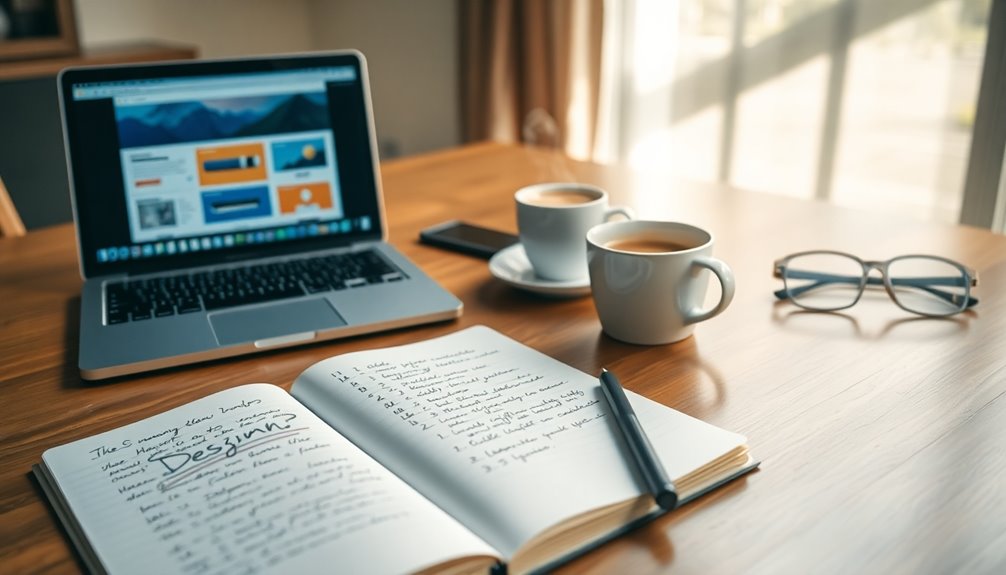
When you receive client feedback, it's essential to approach it with an open mind, as this can greatly enhance your design.
Remember, feedback isn't just about what needs to change; it's a chance to grow! Here are three tips to help you handle it like a pro:
- Listen Carefully: Pay attention to what your client is saying, and ask questions if you're unsure. This shows you care about their thoughts!
- Stay Positive: Keep a cheerful attitude, even if the feedback feels tough. It helps create a friendly atmosphere.
- Make Adjustments: Use the feedback to improve your work. This not only makes your design better but also shows your client you value their opinion.
Embrace feedback, and watch your designs shine!
Challenges in Graphic Design
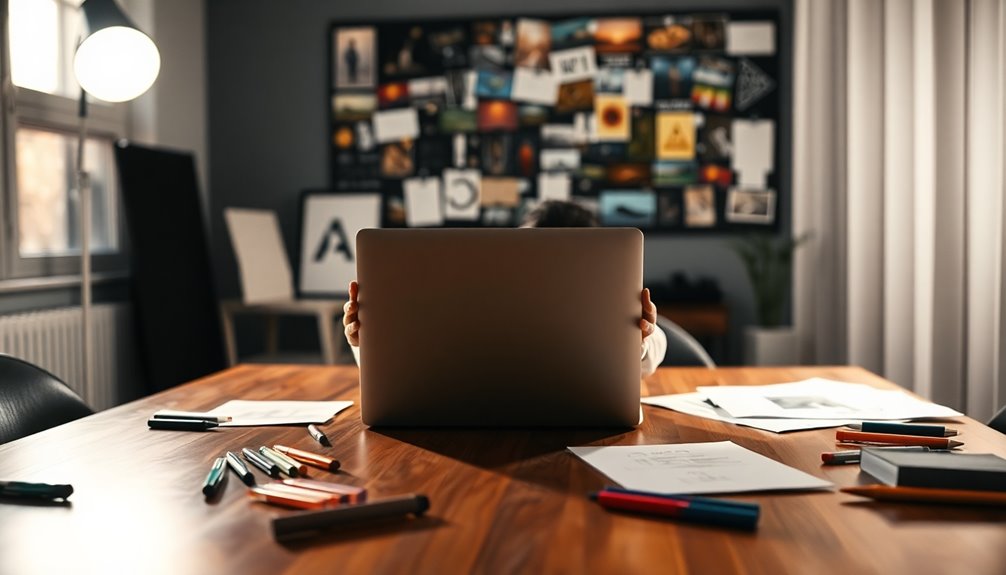
In graphic design, designers often face a variety of challenges that can impact their creative process. You might find yourself racing against tight deadlines, which can make it hard to create your best work.
Sometimes, you'll hit a creative block, feeling stuck and unsure of where to go next. Balancing multiple projects at once can also be stressful, like juggling too many balls in the air!
Plus, keeping up with the latest trends requires constant learning, which can feel overwhelming. Yet, these challenges can help you grow and become a better designer.
Embracing them with a positive attitude can turn obstacles into exciting opportunities, making your design journey even more rewarding. So, let's face these challenges together!
Continuous Learning Opportunities
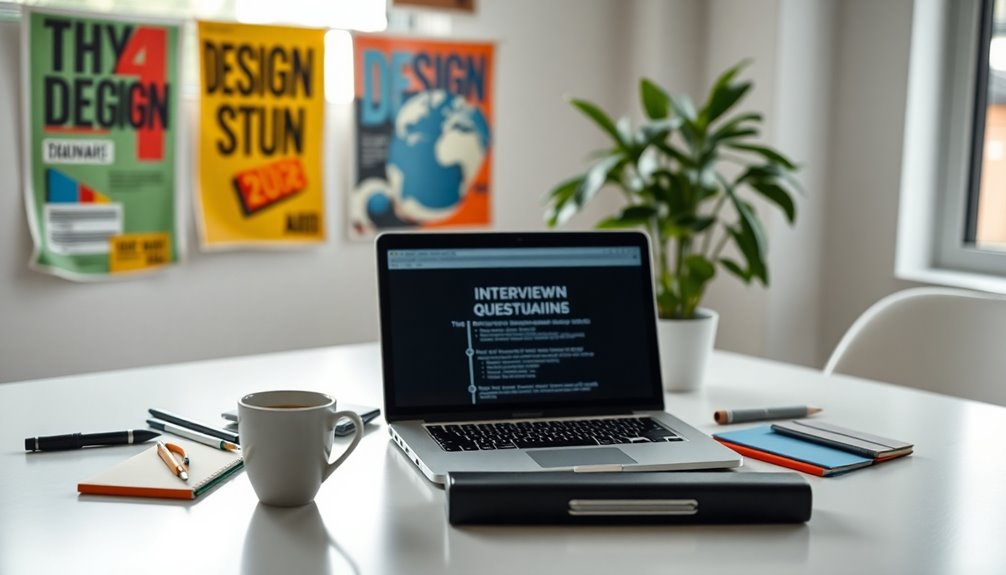
Continuous learning is essential in the ever-evolving world of graphic design.
To stay ahead, you should explore new ideas and tools. Here are three fun ways to keep learning:
- Online Courses: Websites like Skillshare or Coursera offer exciting classes that fit your schedule!
- Networking: Joining design groups can introduce you to other creatives who share helpful tips and tricks.
- Experimentation: Trying out different styles or mediums can spark your creativity and improve your skills. Additionally, engaging in personalized learning pathways can help tailor your growth to meet your unique needs and goals.
Frequently Asked Questions
What Design Trends Do You Currently Find Inspiring?
Right now, you might find bright colors and bold typography super inspiring! These trends make designs pop and grab attention.
You could also love the use of nature-inspired elements, like leaves and flowers, which can bring a fresh feeling to your work.
Don't forget about minimalism, too! Simple designs can feel clean and modern.
Mixing these ideas can help create something truly unique and fun, making your designs stand out even more!
How Do You Handle Constructive Criticism From Peers?
When you get constructive criticism from peers, take a deep breath and listen carefully.
It's like getting a treasure map to improve your work! Ask questions to understand their ideas better, then think about how you can use their feedback to make your design even better.
Remember, everyone wants to help you shine! Keeping a positive attitude makes the process easier and can turn suggestions into exciting new ideas.
You've got this!
Can You Describe a Project You're Particularly Proud Of?
One project you might be really proud of is designing a colorful poster for a community event.
You gathered photos, bright colors, and fun fonts to catch people's attention. You felt excited as you watched it come together, making sure it reflected the event's spirit.
When you saw people smiling at your design and talking about it, you knew you created something special. It made you feel happy and proud to contribute to your community!
What Is Your Approach to Time Management in Projects?
Managing time in projects is like juggling colorful balls; you need focus and practice!
First, you set clear deadlines, breaking tasks into smaller pieces. This way, you can keep track of your progress.
Using tools like calendars helps you stay organized. I also like to prioritize tasks based on importance.
When unexpected things pop up, I adapt and adjust my schedule. This keeps everything flowing smoothly, allowing you to deliver amazing designs on time!
How Do Personal Interests Influence Your Design Work?
Your personal interests can really brighten your design work!
When you love gardening, for example, you might create designs inspired by flowers and colors you see. Traveling can give you cool ideas from different cultures, and hobbies like painting can spark your creativity.
All these experiences shape how you see the world.
Conclusion
Now that you're ready for your graphic design interview, imagine how exciting it'll be to share your ideas! With these essential questions in your pocket, you'll feel confident and prepared. Picture yourself impressing the hiring manager with your creativity and skills. Remember, every question is a chance to shine and show your passion for design. So, take a deep breath, smile, and get ready to make a lasting impression. You've got this—let's see where your journey takes you!
